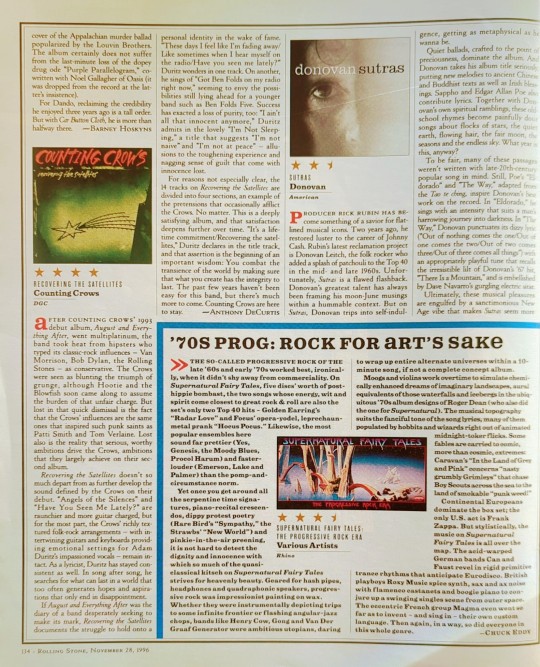#greg brown
Video
youtube
Greg Brown - Speaking in Tongues
12 notes
·
View notes
Text
This Zoe thing: it's impossible to describe in words
May 7, 2023. Sunday. 8:48pm
Home.
Thank God
Motel living gets old.
There is such a feel of lack of privacy.
Talked with neighbor Alice on my return from Chico around 6pm this evening.
Regarding Zoe’s impending death, she said “It will be quick. It will happen soon.”
She will pick up my mail and put the trash cans up while I’m gone Wednesday to Sunday.
She said to check on donating Zoe’s body for scientific research. They pick the body up. Cremation is free.
This is ghastly to discuss. Horrible. But, it’s apparently a reality. I told Zoe today that I still don’t quite believe that she will die.
She told Javiar, her neighbor, that she wanted nothing that would extend or prolong her life.
Zoe wrote journals! I never knew. I glanced in one and saw that it was dated 1987. I brought 5 of her journals home. I will bring the rest next trip.
She said “Don’t get mad about what I wrote about you.”
I said “I never would, that’s what journals are for.”
I brought home Red Fred, Lovable Pinky and the painting I did of LE and Anna’s house in Cassie Loving’s art class in 1983!
When I hesitated taking the painting, she said “Take it, I’m dying.” She said to take things now, they may disappear later.
Letting her precious things go is a sign that she is dying.
The first blog re: Zoe’s illness and impending death came out today.
It got 5 likes.
Driving away from Chico about 1pm, I cried.
I played on Apple Play Greg Brown’s " Spring Wind” in which one lyric is “A Spring wind blew my list of things to do away.”
And a song I’ve never heard before Van Morrison’s “Into the Mystic”
And Phil Ochs. “Changes”.
This feels raggedy and horrible.
It’s so hard not to feel guilty about all that I could have done that I didn’t through the years for Zoe.
So, I breath in healing.
9:55pm
I tried to sleep. I’m vey anxious.
Such odd times. This Zoe thing. I’ve never felt like this before..
This kind of uneasiness.
It’s impossible to describe in words.
End of entry
Notes:
My sister, Zoe, died May 14, 2023.
I live in Modesto, California. Chico, where she died, is a 4 hour drive north from here.
LE and Anna were my father’s parents. The house I painted was their 1926 home they had built in Lincoln Nebraska. That is the city I was born in in1955.
Alice, my neighbor is a retired nurse. She also said on May 7 that my sister’s death would be a rough ride. It was. Zoe died of pancreatic cancer.
Red Fred and Lovable pinky were stuffed animal dog’s that we had as children.
Cassie Loving was my art instructor and later close friend in Placerville, California. I began practicing law in Placerville in the early 1980’s.
Walking up to the court house Monday May 8 here in Modesto, I got the call from Zoe that the Doctor earlier that day said that she had weeks to live.
I returned to Chico Tuesday May 8.
#journaling#writing#sister's impending death#death denial#Phil ochs#Van Morrison#Greg Brown#pancreatic cancer#Linclon Nebraska#Chico California#death arrangements
21 notes
·
View notes
Photo




Greg Brown’s “JC7″ 1,000 HP Flying Supercar !
#art#design#flying cars#flying car#greg brown#JC7#luxury cars#luxury lifestyle#travels#flying private#Jetsetter#jetset#supercar#eVTOL
39 notes
·
View notes
Text










Cake - "The Distance" [x]
#Cake#Cake band#cakeedit#The Distance#John McCrea#Greg Brown#Vince DiFiore#Victor Damiani#Todd Roper#Fashion Nugget#alternative rock#rock#alternative#pop rock#90's#90's music#my gifs
5 notes
·
View notes
Text






#rolling stone magazine#rolling stone#music review#marilyn manson#robert pollard#tobin sprout#medeski martin & wood#midnight oil#BR5-49#the lemonheads#the presidents of the united states of america#counting crows#donovan#supernatural fairy tales#the paul butterfield blues band#suzanna vega#funki porcini#greg brown#ad#herbie hancock#resident evil
9 notes
·
View notes
Text
Seth Avett "Good Morning Coffee" Performance Video
youtube
🎶🌞☕️🌞🎶
#seth avett#good morning coffee#greg brown#acoustic#upbeat#drums#tambourine#the avett brothers#you tube#performance video#Youtube
4 notes
·
View notes
Video
youtube
Iris DeMent The Train Carrying Jimmy Rodgers Home
7 notes
·
View notes
Text

By: Gregory Brown
Published: Sep 1, 2023
About the Author
Dr. Greg Brown is a professor of Exercise Science at the University of Nebraska at Kearney where he also serves as the Director of the LOPERs General Studies program. His primary teaching responsibilities are undergraduate and graduate courses in Exercise Physiology, but he has also taught courses in Introductory Anatomy & Physiology, Sports Nutrition, Research Methods, and Professional Development in Exercise Science. His research has evaluated the effects of nutritional supplements on the physiological response to exercise, the physiological responses to various types of exercise, effective teaching in the exercise science program, and sex-based differences in sports performance. He has authored or co-authored over 50 peer reviewed publications and serves as a peer-reviewer for over two dozen academic journals. He is a member of the American College of Sports Medicine (ACSM), the National Strength and Conditioning Association (NSCA), and the Association of American Educators (AAE).
He and his wife (Amber) have two adult sons and one daughter-in-law. Sadly, both their cat and dog passed away in the past year. His hobbies include running, hunting, fishing, studying history, and watching movies.
--
In the current battle over women’s and girls’ rights to female-only sports, a commonly heard mantra is that there are no sex-based differences in sports performance before puberty. Those who make this claim often contend that if a male is put on puberty blockers before age 12 (or Tanner development stage 2; whichever comes first), he can compete fairly in the female category. But is this really true?Are there really no differences in athletic performance between boys and girls before the onset of puberty? Do puberty blockers administered to children really erase male sex-based athletic advantages? Below, I’ll try to provide answers to these questions.
Like many things currently being put forth in public discourse as settled science, the presence or absence of sex-based athletic differences before puberty is not an open and shut case. There are few databases of records for children’s competitive sports performance and there has been limited scholarly research evaluating sex-based differences in competitive sports performance before puberty. Currently, there are no consensus statements from professional organizations such as the North American Society for Pediatric Exercise Medicine (NASPEM), the National Strength & Conditioning Association (NSCA), the American College of Sports Medicine (ACSM), or the National Athletic Trainers’ Association (NATA) stating that there are, or are not, sex-based differences in athletic performance before puberty.
Below, I will cover the main reasons our data on pre-pubertal sex differences in athletic performance is relatively poor, and draw some preliminary conclusions based on the data we do have that indicates such differences are actually quite significant.
Lack of Records
One challenge that arises when trying to determine whether there are sex-based differences in athletic performance before puberty is the limited availability of records documenting competitive athletic performance in children. For adults participating at the Olympic and collegiate levels, meticulous record-keeping is the norm, and these records are readily accessible online. A simple internet search yields numerous listings of Olympic and collegiate records spanning various sports such as swimming, track and field, cross country, bicycling, and more.
Similarly, records for sports in secondary schools are also carefully maintained. In the United States, it is fairly easy to obtain the results of the most recent state high school track championship from news sources and on the state scholastic athletic association websites. Most secondary schools additionally showcase records for track and field, cross country, and other sports. The abundant availability of records in the Olympic, college, and secondary school arena makes it very easy to compare male and female athletes competing in the same events at the same level of competition. Such comparisons vividly illustrate that once puberty sets in, males outperform females by 10-30 percent (depending on the sport and event).
However, most sports involving pre-pubertal children operate outside the jurisdiction of state scholastic athletic association or even the local primary school. Instead, these activities are typically organized by local clubs or community recreation departments. Children’s sports often prioritize recreation and skill development over competitiveness. As a result, records pertaining to race times, throwing distances, weightlifting achievements, or other athletic benchmarks for children are not as meticulously maintained or as readily accessible as records for high school, college, or Olympic sports. Some have interpreted the lack of records for children’s sport as an indication that any sex-based differences in athletic performance before puberty are negligible or insignificant.
Lack of Scholarly Attention
Adding to the challenge of limited records detailing competitive athletic performance before puberty is the constrained number of available scientific evaluations. For example, Handelsman [1] analyzed publicly accessible data on swimming, running, and jumping in children and adolescents. Although his data clearly illustrate that boys aged 10 and under run faster, swim faster, and jump farther than girls of comparable age, he published these findings in 2017 in a paper titled “Sex differences in athletic performance emerge coinciding with the onset of male puberty.”
In 2019 Senefeld et al. [2] drew upon data from USA Swimming and found that, before age 10, the top 5 girls swam faster than the top 5 boys. However, no disparities in swimming performance were observed between the 10th-50th ranked girls and boys. Additionally, in 2020, Huebner and Perperoglou [3] reported that there were no sex-based differences in competitive weightlifting performance before age 10. To my knowledge, these studies represent the only scholarly examinations of competitive performance in children before puberty.
Taken together, the scarcity of sports records for pre-pubertal children and the limited scholarly output on children’s competitive performance has led some to conclude that there are no differences in athletic performance between boys and girls before puberty. Some have even gone so far as to erroneously asserting that a broad consensus exists regarding the absence of sex-based differences in athletic performance before this developmental stage. However, this does not appear to be true, and in the sections below I will present information that demonstrates the existence of sex-based differences in athletic performance before puberty.
School Based Fitness Testing
In contrast to the limited records available for sports performance and the scarcity of scholarly evaluations regarding children’s competitive sports performance, there exists a plethora of scholarly evaluations focused on school-based physical fitness testing in children as young as six years old. Various tests, such as the Presidential Fitness Test, FitnessGram, Eurofit Fitness Test Battery, and other school-based physical fitness assessments, consistently show that boys tend to outperform girls of the same age in tests measuring muscular strength, muscular endurance, running speed, aerobic fitness, ball throwing, and kicking distance. On the other hand, girls tend to perform better than boys in tests assessing flexibility.
A small sampling of publications evaluating school-based physical fitness testing includes a longitudinal evaluation of 240 German boys and girls aged 9-12 years [4], an analysis of 85,347 fitness test results among Australian boys and girls aged 9-17 years [5], an evaluation of 424,328 Greek boys and girls aged 6-18 years [6], a study examining 1,142,026 performances in a 20-meter shuttle run among boys and girls aged 9-17 year from 50 countries [7], and an assessment of 2,779,165 Eurofit performances among boys and girls aged 9-17 year from 30 countries [8].
Collectively, these studies (along with many others not listed here) indicate a consistent pattern: before puberty, boys tend to outperform girls of the same age in tests measuring muscular strength, muscular endurance, running speed, aerobic fitness, ball throwing, and kicking distance. Conversely, girls typically exhibit better performance in tests focused on flexibility. While physical fitness tests do not always accurately predict success in competitive sports, physical fitness is often a prerequisite for success in sports.
Sports Records
USA Track and Field (USATF) sanctions youth track and field meets in most states, including regional and national championship events. The youngest age categories in USATF are the 8-and-under and the 9-10-year-old age groups, both of which can reasonably be assumed to represent pre-pubertal athletes. Upon evaluating the performances at the USATF state-level Junior Olympics, it becomes apparent that boys frequently jump and throw farther, and run faster than comparably aged girls.
For instance, if we examine the race times for the 100m, 200m, 400m, 800m, and 1500m races, along with the distances achieved in shot put, javelin, and long jump events in the 2023 USATF Nebraska Association Junior Olympics [9], for both boys and girls in the 8-and-under age group, we find that no girl would have outperformed a boy to secure the gold, silver, or bronze medals in any of these events. For the same events in the 9-10-year-old age group, only one girl would have secured a gold medal (out of a possible 8), while two girls would have clinched silver medals (out of 8), and another two girls would have won bronze medals (out of 8). Of course, one could reasonably argue that data from a single youth track meet in Nebraska may not be representative data for pre-pubertal athletic performance as a whole.
So, if we make the same comparison in the same events (100m, 200m, 400m, 800m and 1500m races, and the distances for shot put, javelin, and long jump) in the 2023 USATF Arizona Association Junior Olympics [10], we observe that girls in the 8-and-under age group would have secured zero gold medals, one silver medal, and two bronze medals. In the 9-10-year-old category, a girl would have tied with a boy for a single gold medal, and three girls would have taken home bronze medals. Yet, once again, one could reasonably argue that the combined data from track meets in Nebraska and Arizona may not accurately represent the broader spectrum of pre-pubertal athletic performance.
So, if we make the same comparison for the same events (100m, 200m, 400m, 800m and 1500m races, and the distances for shot put, javelin, and long jump) at the 2023 USATF National Youth Outdoor Championships [11]—an event that includes athletes from many different states—we discover that girls in the 8-and-under age group would have won two gold medals (out of 8), three silver medals (out of 8), and no bronze medals. Girls in the 9-10-year-old age group would have won a single gold medal, two silver medals, and two bronze medals. Collectively, looking at these three track meets, placing side by side the race times for the 100m, 200m, 400m, 800m, and 1500m races, as well as the distances for shot put, javelin, and long jump for boys and girls in the 8-and-under and 9-10-year-old age groups, it’s clear that if girls were to compete against boys, they would have secured only 23 out of 144 medals. Within this tally, girls would have received only five out of 48 gold medals.
Of course, one could reasonably argue that the examples above represent only a single year and only three specific track meets. However, if we evaluate the overall youth records for the best performances in running, throwing, and jumping from USATF [12], the USATF National Junior Olympics [13], and the School Sport Australia Track & Field Championships [14], they collectively indicate that boys aged 10 and under outperform girls of the same age across all recorded events. On average, boys outperform girls by 3 percent in running, 9 percent in jumping, and 16 percent in throwing events. Similarly, records for boys aged 10 and under in USA Swimming show faster times than girls' records in 18 out of 22 events [15].
While examining medal counts at specific track meets offers valuable, albeit somewhat anecdotal, insights into performance differences between boys and girls before puberty, these counts do not qualify as a rigorous scientific evaluation. Though scholars often use evaluations of overall records for best performances to showcase sex-based differences in adult athletic performance, disparities in pre-pubertal children’s performance are frequently dismissed as being too small to be meaningful. Moreover, the overall youth records from USATF have not been updated since 2018, the records from the USATF National Junior Olympics have not been updated since 2019, and the School Sport Australia Track & Field Championship records have not seen updates since 2016. It’s unclear why these records have not been updated, but it does raise some questions about the accuracy of these records.
Nonetheless, by considering scholarly assessments of school-based fitness test data, several youth track meets, track and field best performance records, and swimming best performance records, it certainly seems like there is an emerging pattern of pre-pubertal male sex-based athletic advantages.
Scholarly Evidence for Sex-Based Sports Differences Before Puberty
Some colleagues and I have recently presented an assessment of sex-based differences in athletic performance before puberty at the 2023 Annual Meeting of the American College of Sports Medicine [16]. Drawing upon a national database of track and field performance (athletic.net) and evaluating the top 10 performances for boys and girls in the 8-and-under and 9-10-year-old age groups over a 5-year period, we observed consistent trends. Boys consistently (and statistically) ran almost 5 percent faster, long jumped 6 percent farther, threw the shot put 20 percent farther, and threw the javelin 40 percent farther than girls of the same age. At the 2023 Annual Meeting of the American College of Sports Medicine, a separate team of researchers from a different university used the same database, albeit with slightly different evaluation methods, and came to similar conclusions regarding the pre-pubertal advantages of male athletes [17].
In light of these findings, it is reasonable to conclude that male athletes indeed possess advantages in sports performance before reaching puberty. This conclusion is founded on extensive scholarly evaluations of fitness tests in schools, data gleaned from youth track meets and records, as well as youth swimming records for best performances. My personal analysis of the top 10 national track and field performances for boys and girls within the 8-and-under and 9-10-year-old age groups across a 5-year period supports this, further corroborated by similar outcomes from another team of researchers. Admittedly, the sex-based disparities before puberty are less pronounced than after puberty, but they exhibit a consistent pattern that yields a statistically significant difference favoring male athletes.
What about Puberty Blockers?
Whether there are, or are not, sex-based differences in athletic performance before puberty still leaves questions about how puberty blockers affect athletic performance. The truth is, we don’t have enough information to answer questions about how puberty blockers affect athletic performance. There are no published studies evaluating the effects of puberty blockers on muscle strength, muscle endurance, running speed, aerobic fitness, as well as throwing or kicking distance in children, whether in school or laboratory settings. Similarly, there is no research on how puberty blockers might impact performance in competitive sports. Limited studies have touched upon the effects of puberty blockers on body composition and height.
Two long-term studies investigating the impact of puberty blockers on body composition and height indicate that the sex-based differences in lean body mass [18] and height [19] persist even after 2 years on puberty blockers followed by an additional 6 years of so-called “gender-affirming hormone therapy.” It is undeniable that male advantages in lean body mass and body height translate to athletic advantages as adults. It’s reasonable to assume that these advantages also extend to athletic performance among children and adolescents. The sex-based differences in performance in children may be smaller than in adults, but small differences can mean the difference between a gold medal and no medal in sports.
Conclusion
Readers of Reality’s Last Stand will be familiar with the important sex-based differences between males and females. These differences begin at conception and continue throughout one’s life. Sex-based anatomical and physiological differences confer inherent athletic advantages to males when compared to females of the same age, possessing similar talents and undergoing similar training, across all age groups, even before puberty. Having a transgender identity, with or without the use of cross-sex hormones, does not eliminate sex-based differences in anatomy and physiology, nor does it erase sex-based differences in athletic performance.
It is my opinion that, in order to maintain a level playing field for female athletic competition, transgender identified males (i.e., “transgirls” and “transwomen”) should not be allowed to participate in the female sports category before or after puberty even when puberty blockers are used.
#Greg Brown#sports#female sports#male sports#womens sports#girls sports#mens sports#boys sports#athletics#female athletes#male athletes#cheating#sex based differences#sex differences#anatomy#physiology#athletic performance#gender ideology#queer theory#gender identity ideology#genderwang#gender identity#puberty#puberty blockers#religion is a mental illness
3 notes
·
View notes
Video
youtube
CAKE - Frank Sinatra
#youtube#cake#cake band#fashion nugget#frank sinatra#john mccrea#greg brown#vince difiore#victor damiani#todd roper#alternative rock#funk rock#alternative country#latin rock#music#music is love#music is life#music is religion#raining music#90s#90s music
8 notes
·
View notes
Text
#music#greg brown#this is the folk singer who is maybe related to me+original hadestown hades btw#also you can't find lyrics for this song#it is all the regina spektor one even under his name :(#Spotify
2 notes
·
View notes
Video
youtube
Seth Avett: Good Morning Coffee
5 notes
·
View notes
Text



"spring wind", greg brown | flight, e. martin hennings | "wild geese", mary oliver
#poetry#words#art#web weaving#parallels#birds#greg brown#mary oliver#e. martin hennings#this one's been knocking around my head for a while so its nice to get it out
5 notes
·
View notes
Text
Strong appreciation for Greg Brown calling out the nonsense of this $150 burger at the Braves ballpark
#I don't think so#a braves ring just what bucco fans want#he's not accepting it!#he gets it#but bro this burger is $150 who cares how long they've been a team#greg brown#pirates#pittsburgh pirates#mlb
2 notes
·
View notes
Text
I feel like the Hadestown Concept Album (2010) is severely underrated
#indigo posts#hadestown musical#hadestown#anais mitchell#ani difranco#Greg brown#The Haden triplets#Justin Vernon#Ben knox miller#Orpheus#Eurydice#is this an unpopular opinion?#not sure
4 notes
·
View notes
Text
youtube
Greg Brown _ Wash My Eyes
thanks to 0rph3u5
1 note
·
View note